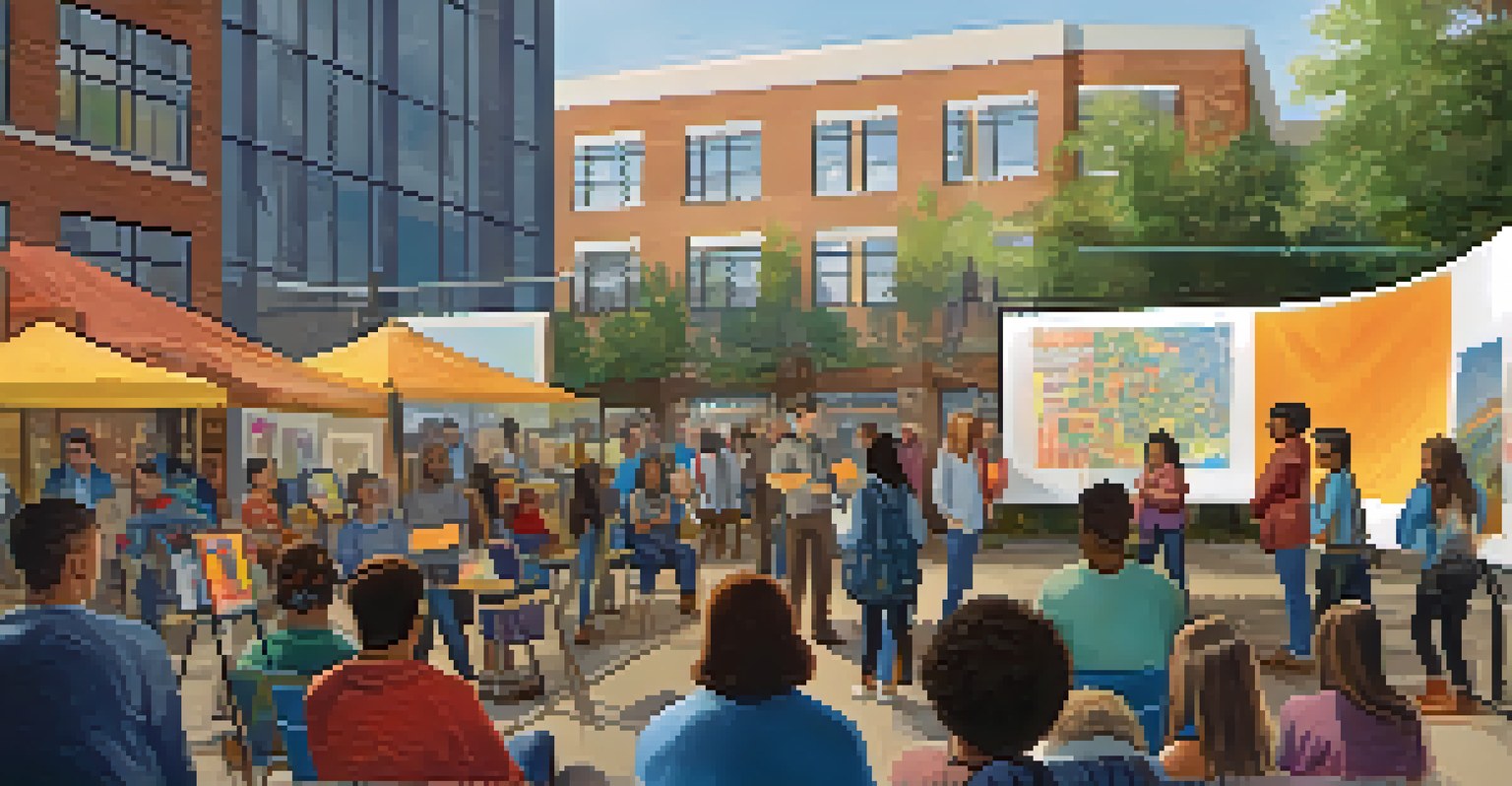Project-Based Learning: Solving Local Community Challenges

Understanding Project-Based Learning and Its Benefits
Project-based learning (PBL) is an educational approach that engages students in real-world projects, enhancing their problem-solving skills. Unlike traditional learning, PBL encourages active participation, allowing students to take ownership of their learning journey. This method not only fosters collaboration but also builds critical thinking, as students must navigate challenges in their projects.
Project-based learning is a powerful approach that drives student engagement and creates meaningful connections to real-world issues.
The benefits of PBL extend beyond the classroom. Students become more engaged when they see the relevance of their work to their community. This connection helps them understand complex social issues and motivates them to seek solutions, creating a sense of purpose in their education.
Moreover, PBL nurtures essential skills such as communication, teamwork, and adaptability. These skills are crucial in today’s ever-changing world, preparing students not just for academic success but for life beyond school.
Identifying Local Community Challenges
The first step in implementing project-based learning is identifying the specific challenges facing your local community. This might involve environmental issues, social inequalities, or infrastructure needs. Engaging with community members through surveys or discussions can provide valuable insights into what matters most to them.

For example, a community struggling with access to fresh fruits and vegetables could present a project opportunity for students. By exploring food deserts in their area, students can identify potential solutions, such as community gardens or local farmers’ markets, which not only educate them but also serve the community.
Benefits of Project-Based Learning
Project-based learning boosts student engagement and essential skills by connecting their education to real-world challenges.
By focusing on real-life problems, students develop a deeper understanding of their community's dynamics. This approach fosters empathy and civic responsibility, as they see the direct impact of their efforts on their neighbors.
Designing Projects Aligned with Community Needs
Once local challenges have been identified, the next step is to design projects that address these needs. Involving community stakeholders in the planning process ensures that the projects are relevant and feasible. Collaborating with local organizations can provide students with additional resources and support.
The best way to predict the future is to create it.
For instance, if students decide to tackle the issue of youth unemployment, they could design a project that creates a mentorship program linking high school students with local professionals. This not only helps their peers gain valuable insights but also builds a network of support within the community.
Effective project design also includes setting clear goals, timelines, and evaluation criteria. This structured approach helps students stay focused and allows them to measure the impact of their work, reinforcing the significance of their contributions.
Engaging Stakeholders and Community Members
Engagement is key to the success of any project-based learning initiative. Inviting community members to participate not only enriches the learning experience but also builds trust and collaboration. Hosting community forums or workshops can help students gather feedback and generate enthusiasm for their projects.
For example, if a group of students is working on a clean-up initiative, involving local residents can lead to greater participation and ownership of the project. When community members see their input valued, they are more likely to support and contribute to the efforts.
Community Engagement is Key
Involving community members in projects fosters collaboration and trust, enhancing both the learning experience and project outcomes.
Additionally, engaging stakeholders such as local businesses, non-profits, and government officials can provide students with mentorship and resources. Building these relationships not only enhances the project but also prepares students for future collaborations in their careers.
Implementing Projects and Overcoming Challenges
With a solid plan in place, it’s time to implement the project. This phase is often where students learn the most, as they encounter unforeseen challenges that require problem-solving and resilience. Whether it’s managing time effectively or addressing community resistance, each obstacle provides a valuable learning opportunity.
For instance, if students face difficulties securing funding for their community garden, they might have to brainstorm alternative solutions, such as crowdfunding or seeking local sponsorships. This adaptability enhances their critical thinking skills and prepares them for real-world scenarios.
Moreover, it’s important for students to document their process and reflect on their experiences. This reflection not only solidifies their learning but also helps them communicate their findings to others, creating a ripple effect of knowledge within the community.
Evaluating Project Outcomes and Impact
Evaluating the outcomes of a project is essential for understanding its impact on the community and the students themselves. This involves assessing both the tangible results, such as increased community engagement or improved local resources, and the intangible benefits, like enhanced student skills and confidence.
Students can use surveys, interviews, or even before-and-after comparisons to gauge the effectiveness of their project. For example, after launching a mentorship program, they might track the number of participants who secure internships or jobs, providing concrete evidence of their success.
Evaluating Project Impact
Assessing the results of projects helps students understand their contributions and fosters a growth mindset for future initiatives.
This evaluation phase fosters a growth mindset, encouraging students to learn from both successes and failures. By analyzing what worked and what didn’t, they can apply those lessons to future projects, continuing the cycle of improvement and community engagement.
Sharing Success Stories and Lessons Learned
Sharing the successes and challenges of project-based learning initiatives is crucial for inspiring others. By documenting their journey through blogs, presentations, or social media, students can showcase their projects and encourage other community members to get involved.
For instance, a group that successfully launched a recycling program might share their story at a local event, highlighting the process and the positive changes in community behavior. This not only promotes their initiative but also raises awareness of environmental issues.

Additionally, sharing lessons learned can help refine future projects. When students articulate their experiences, they contribute to a growing body of knowledge that can guide others in similar endeavors, fostering a culture of collaboration and innovation within the community.